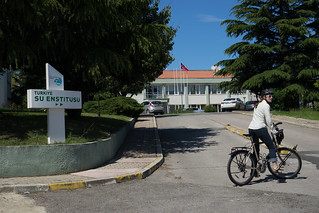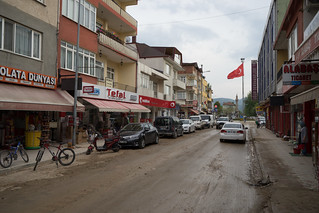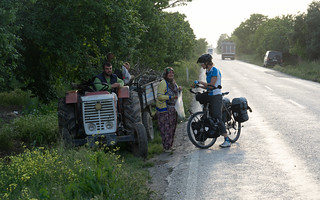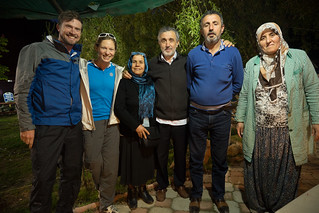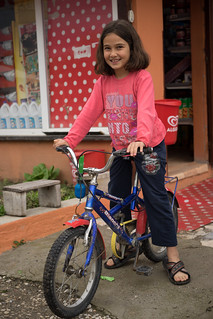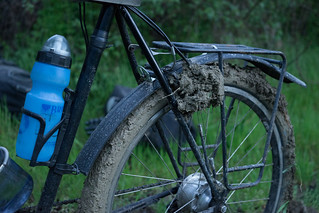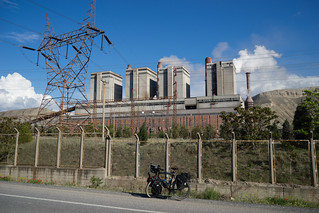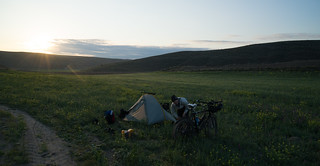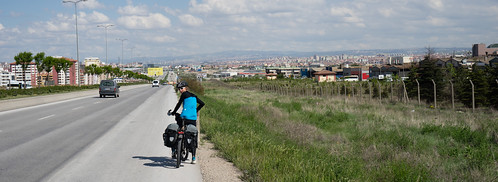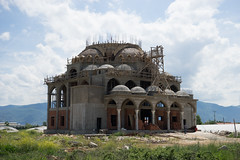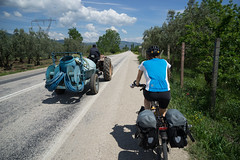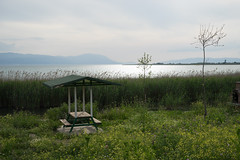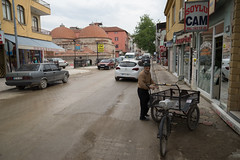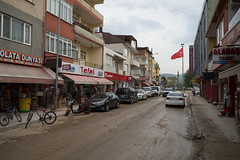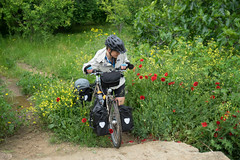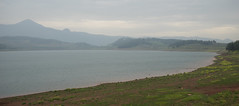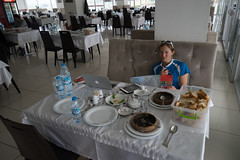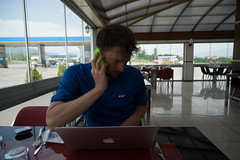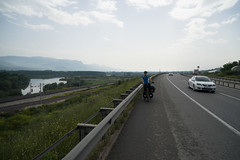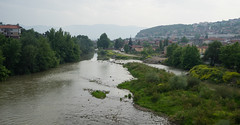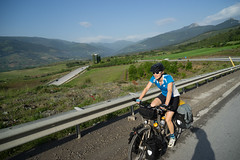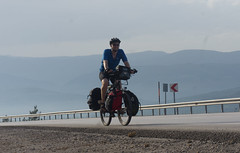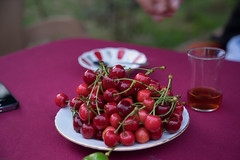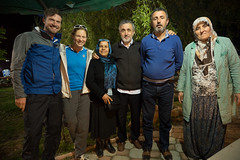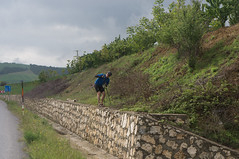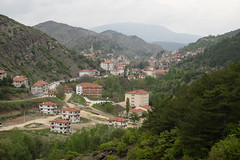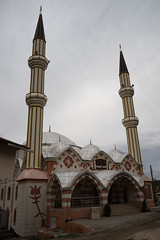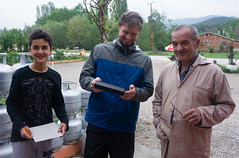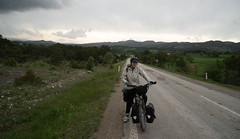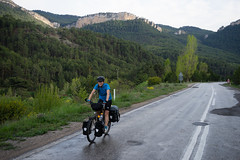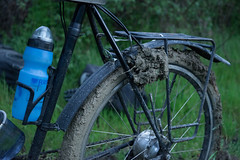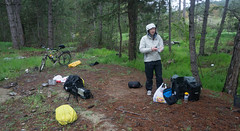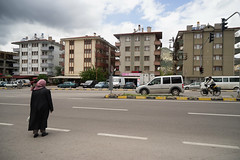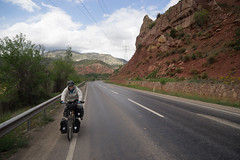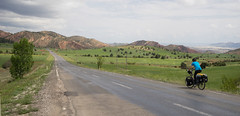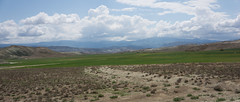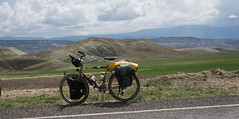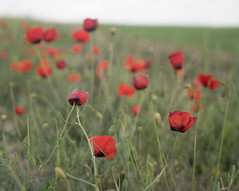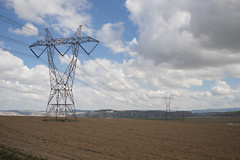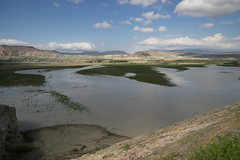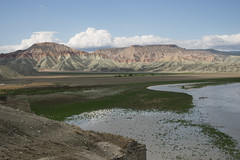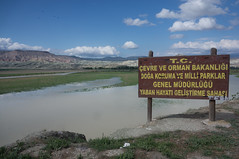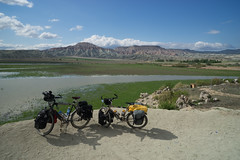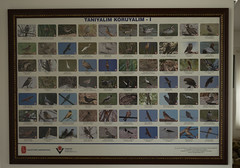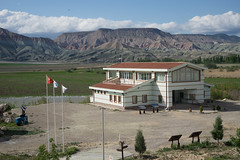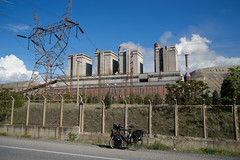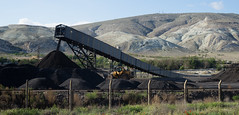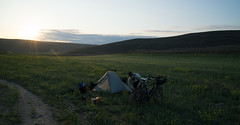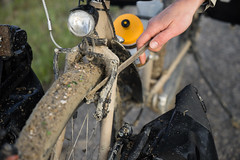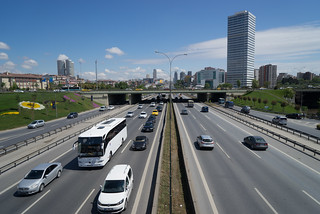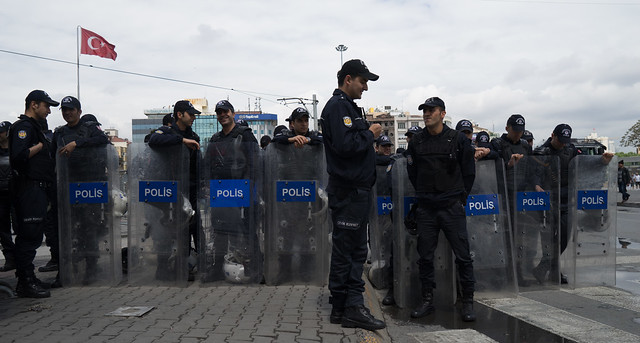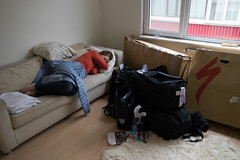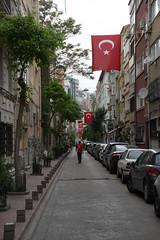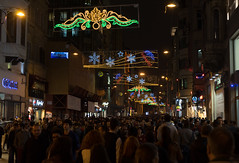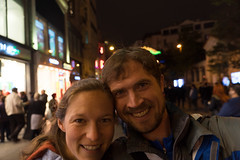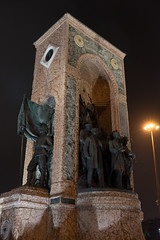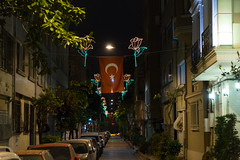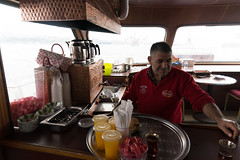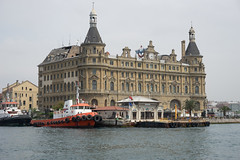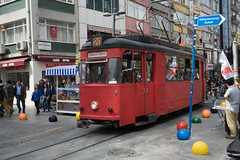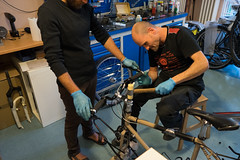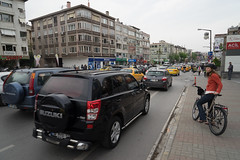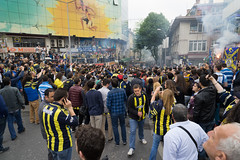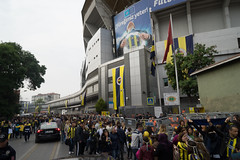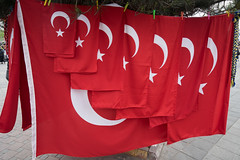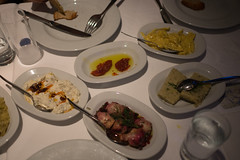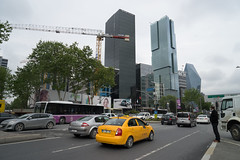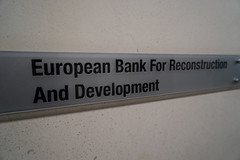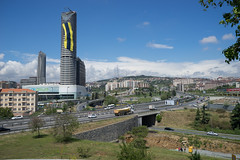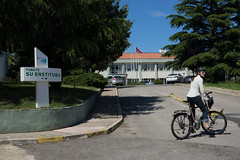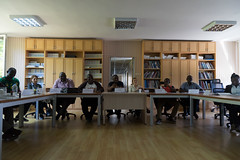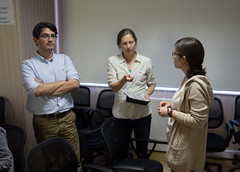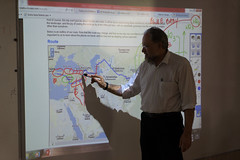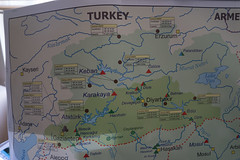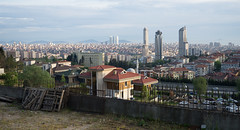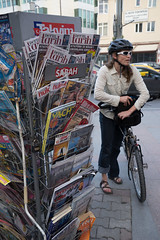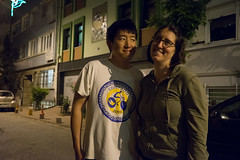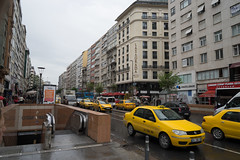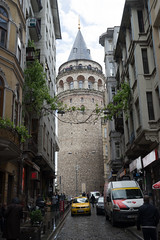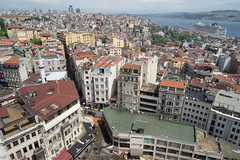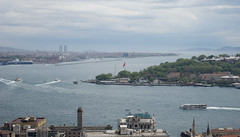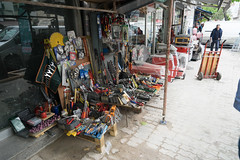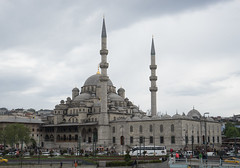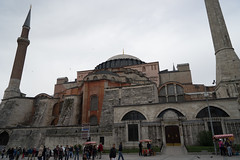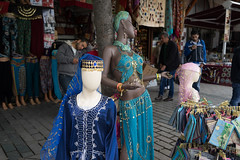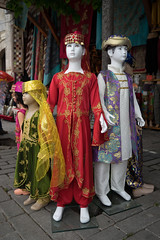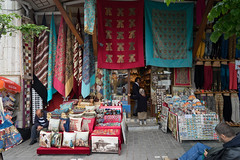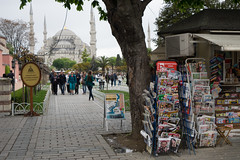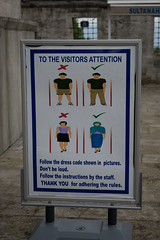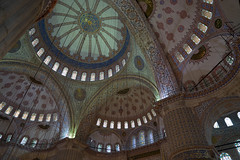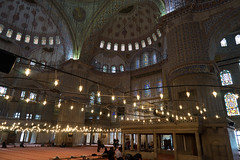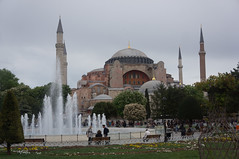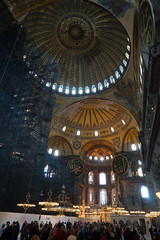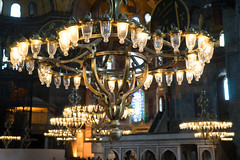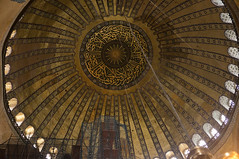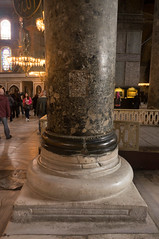A few days after arriving in Istanbul, we biked to the Turkish Water Institute, a think tank established as a special funded entity under the Ministry of Forestry and Water Affairs. We took a ferry over to the Anatolian side of Istanbul, then slowly wound our way over and under highways to reach the Institute on our bikes.
Turkey and California have a lot in common when it comes to water. While Turkey is twice as large as California (783,562 km² versus 423,970 km²), it’s also about twice as populous (75 million versus 38 million people), meaning they have similar population density. Both California and Turkey are challenged by the spatial and temporal distribution of precipitation. They have a Mediterranean climate, meaning rainfall is very seasonal, with wet winters and dry summers. Their populations are also largely centered away from where most of the rain falls. These two factors mean that storage and transportation play a large role in water management and use. Turkey and California also have a fairly similar breakdown of how water is used by the major sectors.
Agriculture is a major water user, and both Turkey and California are large producers and exporters of a variety of crops. Like California, Turkey produces a range of fresh produce and nuts. Most of its arable land is dedicated to grains – especially wheat – and it is also a major producer of cotton.
Another similarity is that both Turkey and California have experienced serious drought this year. In January, Istanbul had only about 100 days of water reserves, according to the Center for Middle Eastern Strategic Studies. The city is supplied with water from 10 dams in the Marmara and Black Sea regions, and the water levels in these reservoirs were all at their lowest point in six years, around 35 percent capacity, and in January three were not able to supply any water. However, it appears that officials were not terribly concerned, and there was even some disagreement among the ministries about whether there was enough water in reservoirs to meet electricity demands. California is facing similar shortages. On January 17, the governor declared a drought state of emergency, urging consumers to conserve water and stating that the State Water Project, a system of reservoirs and aqueducts that moves water across the state to urban and agricultural consumers, would not be able to provide any deliveries this summer. More recently, releases have been increased to five percent of normal, which is still the least amount of water that has been provided since deliveries began in the 1960s.
Despite these features in common, there are a number of key differences in water supply and management in California and Turkey. First, Californians use much more water than Turks. Depending on how you measure it, per capita consumption of water in Turkey in 2008 was 112 liters (30 gallons) to 215 liters (57 gallons) per day (the lower figure is billed water consumption, and the higher figure is total water abstracted divided by population – this indicates that half of the water is lost before it reaches the customer, or is not billed). In California, per capita water consumption in 2010 was 460 liters (124 gallons) per day (I believe this is billed water consumption). These figures reflect water delivered to individual consumers (not, for example, embedded water in food consumption, or industrial water use divided over population). Based on these numbers, Californians use two to four times as much water as people in Turkey.
Turkey and California are also at very different stages in ‘developing’ their water resources. As mentioned above, infrastructure to store and transport water is important in places where people live far from where rain falls, and where precipitation is highly seasonal. Istanbul has a long history of moving and storing water, dating back to the city’s founding as Constantinople, the eastern capital of the Roman Empire. We visited the Basilica Cistern and the Valens Aqueduct and were impressed with the massive scale of these projects: the aqueduct, itself about one kilometer long but part of a network that ultimately was over 250 km long, moved water from the hills near the city to over 100 underground cisterns. The Basilica Cistern, now a tourist attraction in the Sultanamhet neighborhood, is approximately 9,800 square meters (105,000 square feet), and can hold 80,000 cubic meters (2,800,000 cubic feet) of water. Constructed during the 3rd and 4th centuries, the Cistern supplied water to the Topkapi Palace and continued to supply water for the city after Ottoman times.
Overall, Turkey has come to large water projects more recently than California has. There are at least 1,400 dams in the State of California, with a combined reservoir capacity of over 45 million acre-feet and over 130 power projects. Most of these dams were built decades ago. Dam-building is now almost non-existent, partly due to having run out of places to put them – only a few rivers are undammed from the mountains to the ocean, and we have used most of our good reservoir sites. In addition, public opposition and environmental laws have influenced how we use and value our rivers. A good summary of the history and future of dams in California can be found in a series of blog postings by the Natural Resources Defense Council.
In Turkey, on the other hand, dam building is on the upswing. According to one source, there are currently 485 dams in Turkey, while another source states that there are 635 large dams in the country. Of these, only eight were built before 1960, which indicates how quickly the country has been constructing dams. And Turkey plans to build more. According to one source, in the next twelve years, Turkey plans to nearly double the total number of dams in the country. The government utility DSI currently has 24 hydropower projects under construction, some of which are part of the Southeastern Anatolia Project, which includes 22 dams and 19 hydraulic power plants. The dam-building trend has not gone unnoticed, and one of the largest environmental and social movements in the country is the anti-dam movement. This movement, mostly comprised of local campaigns where dams are under construction or planned, is fighting not only environmental damage, but also the displacement of populations and destruction of historical sites in valleys flooded by reservoirs.
Turkey and California both face changes to their water resources due to climate change. Along the Black Sea coast in Turkey, precipitation is expected to increase, but in the inland areas, it is expected to decrease – overall, surface runoff is projected to decrease significantly later this century. In California, precipitation is expected to change in terms of when and how it falls. More is expected as rain, and less as snow. California depends heavily on snowfall in the mountains, which acts as a natural reservoir that holds winter’s precipitation until it is needed in the dry season, and then releasing it into the many rivers and reservoirs downstream. On Turkey’s two major international rivers – the Tigris and Euphrates – a 12% decrease of the average annual discharge is expected in Turkey by 2040–2069 . The reduction in discharge – along with the many dams installed or planned for these rivers – has implications not only for Turkey, but for Iraq and Syria downstream.
As Turkey’s economy continues to grow, and as its thirst for water – for cities, agriculture, and energy – increases while overall supply decreases, a critical question must be answered: will Turkey follow California’s pattern, damming nearly every major river to harness its energy and divert its waters? Or will it look to other water and energy sources, leaving some rivers wild and valleys un-flooded? Which is the right course for the country? We will investigate these questions further as we travel, visiting parts of Turkey that are facing a drier future, including the headwaters of the Tigris and Euphrates Rivers.







